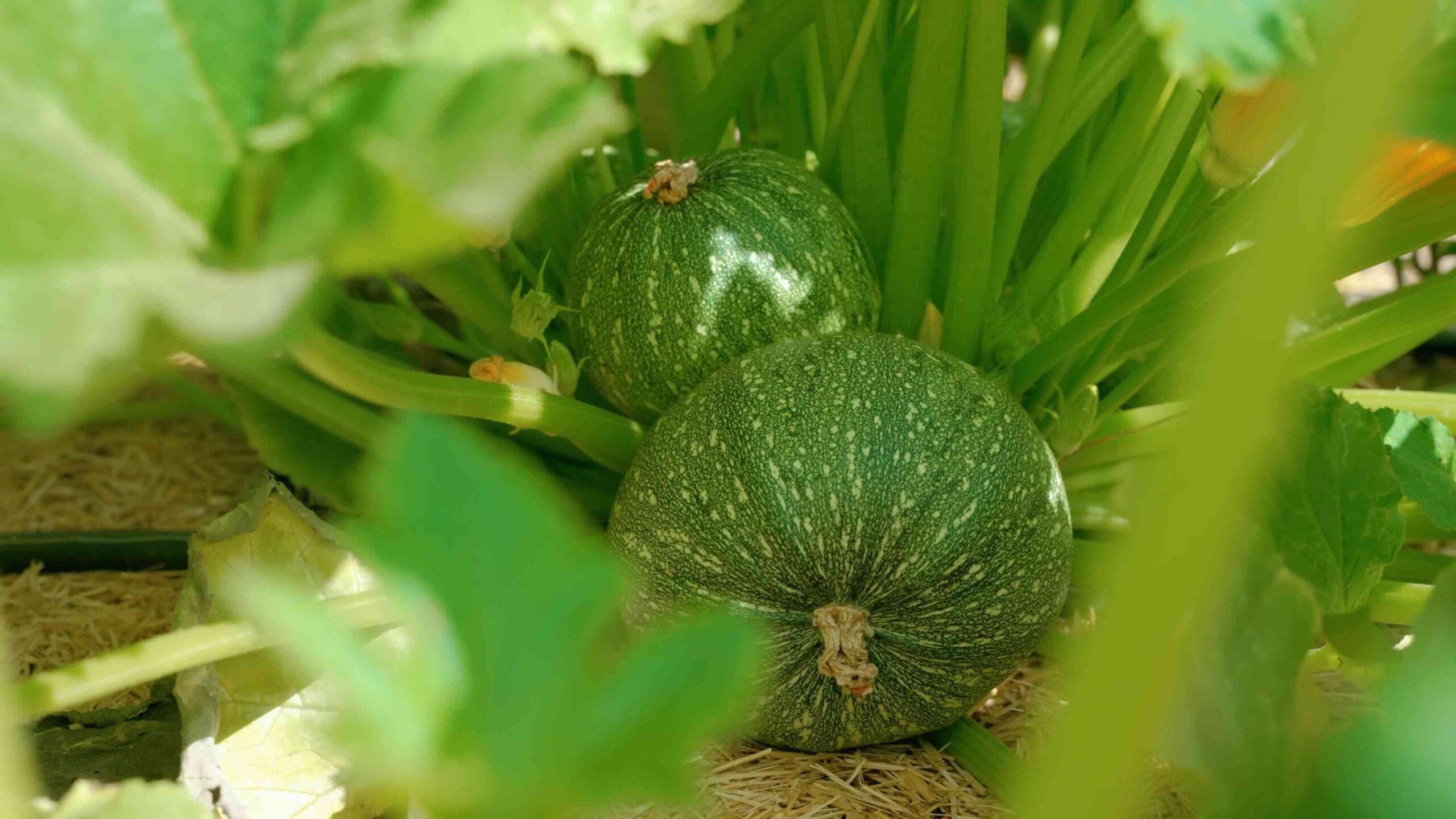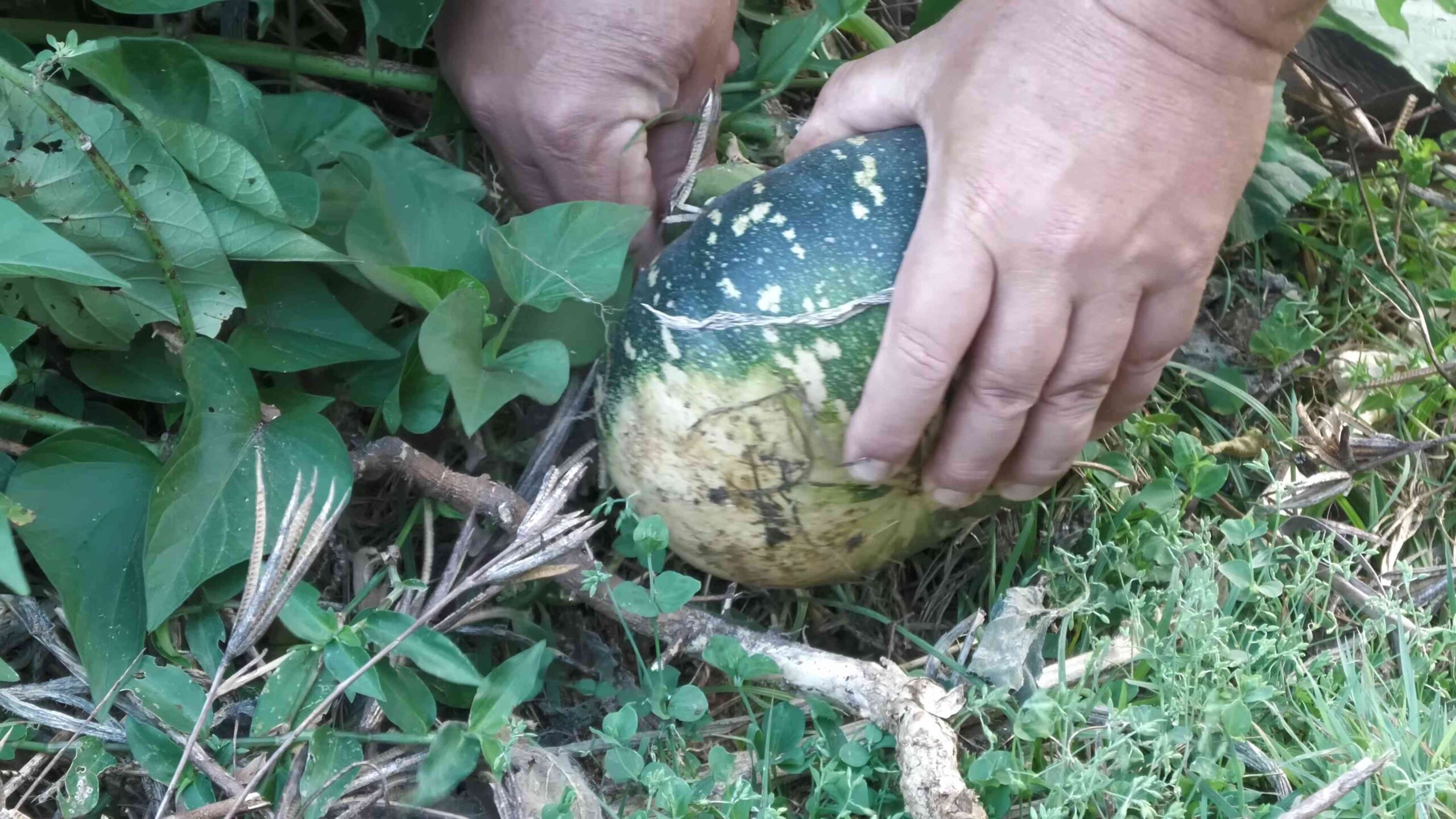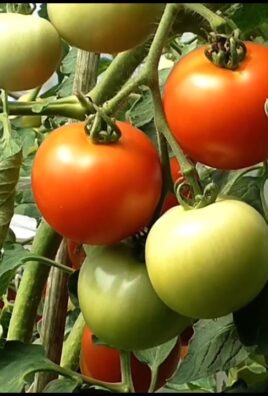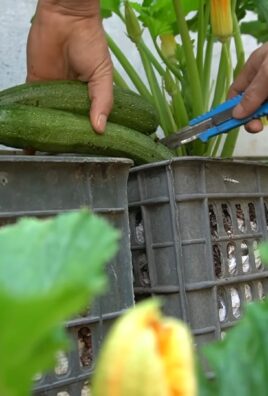Growing Squash at Home can seem daunting, but trust me, it’s more rewarding than you might think! Imagine stepping into your backyard and harvesting your own vibrant, delicious squash – ready to be transformed into comforting soups, savory roasts, or even sweet pies. Forget those bland, store-bought vegetables; with a little know-how, you can cultivate a bounty of flavorful squash right in your own garden.
Squash has a rich history, dating back thousands of years to Central and South America, where it was a staple food for indigenous populations. It’s been cultivated for its nutritional value and versatility, and now, you can continue that tradition in your own backyard! But let’s be honest, sometimes getting those sprawling vines to produce a healthy harvest can feel like a battle. That’s where these DIY tricks and hacks come in.
I’m here to share some simple, effective strategies that will help you overcome common challenges and maximize your squash yield. Whether you’re dealing with pesky pests, struggling with pollination, or simply want to boost your plant’s growth, these tips will empower you to become a successful home gardener. So, let’s dive in and unlock the secrets to growing squash at home like a pro!

Growing Squash at Home: A Beginner’s Guide to Bountiful Harvests
Okay, so you want to grow squash? Awesome! It’s a rewarding experience, and nothing beats the taste of homegrown squash. I’ve been growing squash for years, and I’m excited to share my tips and tricks with you. This guide will walk you through everything you need to know, from choosing the right variety to harvesting your delicious crop.
Choosing Your Squash Variety
First things first, you need to decide what kind of squash you want to grow. There are two main categories: summer squash and winter squash.
* Summer Squash: These are harvested when they’re young and tender. Think zucchini, yellow squash, and pattypan squash. They have thin skins and are best eaten soon after picking.
* Winter Squash: These are harvested when they’re mature and have a hard rind. Think butternut squash, acorn squash, spaghetti squash, and pumpkins. They can be stored for months, making them a great option for extending your harvest.
Consider your climate and the amount of space you have. Some squash varieties are bush types, which are more compact, while others are vining types, which can spread out quite a bit.
Preparing Your Garden Bed
Squash are heavy feeders, meaning they need a lot of nutrients. So, preparing your garden bed properly is crucial for a successful harvest.
* Sunlight: Squash needs at least 6-8 hours of direct sunlight per day. Choose a location in your garden that gets plenty of sun.
* Soil: Squash prefers well-drained soil that is rich in organic matter.
* Soil Testing: Ideally, get your soil tested to determine its pH and nutrient levels. Squash prefers a soil pH between 6.0 and 6.8. You can buy a soil testing kit at most garden centers or send a sample to your local agricultural extension office.
* Amending the Soil: If your soil is lacking in nutrients, amend it with compost, aged manure, or other organic matter. I usually add a generous amount of compost to my squash beds before planting.
* Raised Beds: If you have poor soil drainage, consider growing your squash in raised beds. This will help to improve drainage and prevent root rot.
Planting Your Squash
You can either start your squash seeds indoors or direct sow them in your garden. I prefer to direct sow, as squash seedlings can be a bit finicky to transplant.
* Starting Seeds Indoors (Optional): If you live in a colder climate with a short growing season, you may want to start your seeds indoors 3-4 weeks before the last expected frost. Use biodegradable pots to minimize root disturbance when transplanting.
* Direct Sowing: Wait until the soil has warmed up to at least 60°F (15°C) before direct sowing your squash seeds. This is usually a couple of weeks after the last expected frost.
* Planting Depth: Plant your seeds about 1 inch deep.
* Spacing: Space your plants according to the variety you are growing. Bush varieties can be spaced closer together than vining varieties. Check the seed packet for specific spacing recommendations. I usually space my bush varieties about 2-3 feet apart and my vining varieties about 4-6 feet apart.
* Hills: Some gardeners like to plant squash in hills. To create a hill, mound up the soil about 1 foot high and 2 feet wide. Plant 3-4 seeds on top of the hill. Once the seedlings emerge, thin them to the strongest plant.
* Watering: Water your seeds thoroughly after planting. Keep the soil moist but not soggy until the seedlings emerge.
Caring for Your Squash Plants
Once your squash plants are established, there are a few things you need to do to keep them healthy and productive.
* Watering: Squash needs consistent watering, especially during hot, dry weather. Water deeply and infrequently, rather than shallowly and frequently. Aim to water at the base of the plant to avoid wetting the foliage, which can lead to fungal diseases.
* Fertilizing: Squash are heavy feeders, so you’ll need to fertilize them regularly. Use a balanced fertilizer or a fertilizer specifically formulated for vegetables. I like to use a liquid fertilizer diluted to half strength every 2-3 weeks.
* Weeding: Keep your squash beds free of weeds. Weeds compete with your squash plants for nutrients and water. Hand-pull weeds or use a hoe to remove them. Be careful not to damage the roots of your squash plants.
* Mulching: Mulch around your squash plants with straw, hay, or wood chips. Mulch helps to retain moisture in the soil, suppress weeds, and regulate soil temperature.
* Pest Control: Squash plants are susceptible to a few common pests, including squash bugs, squash vine borers, and aphids. Inspect your plants regularly for signs of pests.
* Squash Bugs: Squash bugs are small, brown insects that suck the sap from squash plants. They can cause significant damage to your plants. Hand-pick squash bugs off your plants or use insecticidal soap to control them.
* Squash Vine Borers: Squash vine borers are moth larvae that bore into the stems of squash plants. They can cause the plants to wilt and die. To prevent squash vine borers, wrap the base of your squash plants with aluminum foil or nylon stockings. You can also inject Bacillus thuringiensis (Bt) into the stems of your plants to kill the borers.
* Aphids: Aphids are small, soft-bodied insects that suck the sap from squash plants. They can cause the leaves to curl and distort. Spray aphids with insecticidal soap or neem oil to control them.
* Disease Control: Squash plants are also susceptible to a few common diseases, including powdery mildew and downy mildew.
* Powdery Mildew: Powdery mildew is a fungal disease that causes a white, powdery coating on the leaves of squash plants. To prevent powdery mildew, provide good air circulation around your plants and avoid overhead watering. You can also spray your plants with a fungicide.
* Downy Mildew: Downy mildew is another fungal disease that causes yellow spots on the leaves of squash plants. To prevent downy mildew, provide good air circulation around your plants and avoid overhead watering. You can also spray your plants with a fungicide.
* Pollination: Squash plants have separate male and female flowers. The female flowers need to be pollinated in order to produce fruit. Bees are the primary pollinators of squash plants. If you don’t have enough bees in your garden, you may need to hand-pollinate your squash flowers.
* Hand-Pollination: To hand-pollinate squash flowers, use a small paintbrush to transfer pollen from the male flower to the female flower. The male flower has a long, thin stem, while the female flower has a small fruit at the base.
Harvesting Your Squash
The timing of your harvest will depend on the type of squash you are growing.
* Summer Squash: Harvest summer squash when they are young and tender. The skin should be smooth and easily pierced with your fingernail. Harvest zucchini and yellow squash when they are about 6-8 inches long. Harvest pattypan squash when they are about 3-4 inches in diameter.
* Winter Squash: Harvest winter squash when they are mature and have a hard rind. The skin should be dull and difficult to pierce with your fingernail. The stem should be dry and brown. Harvest butternut squash when they are tan in color. Harvest acorn squash when they are dark green in color. Harvest spaghetti squash when they are yellow in color. Harvest pumpkins when they are orange in color.
Harvesting Tips:
1. Use a sharp knife or pruners to cut the squash from the vine. Leave a few inches of stem attached to the squash.
2. Handle the squash carefully to avoid bruising.
3. Cure winter squash before storing them. To cure winter squash, place them in a warm, dry place for 1-2 weeks. This will help to harden the rind and improve their storage life.
Storing Your Squash
Summer squash should be stored in the refrigerator and used within a few days. Winter squash can be stored in a cool, dry place for several months.
* Summer Squash Storage: Store summer squash in the refrigerator in a plastic bag. Use within a few days.
* Winter Squash Storage: Store winter squash in a cool, dry place, such as a basement or root cellar. The ideal storage temperature is between 50°F and 60°F (10°C and 15°C). Do not store winter squash near apples or pears, as these fruits release ethylene gas, which can cause the squash to spoil.
Troubleshooting
Even with the best care, you may encounter some problems when growing squash. Here are a few common issues and how to address them:
* Blossom End Rot: This is a condition where the blossom end of the squash turns brown and rots

Conclusion
So, there you have it! Growing squash at home, while it might seem daunting at first, is an incredibly rewarding experience that brings the bounty of the garden directly to your table. We’ve explored the key steps, from selecting the right varieties and preparing your soil to nurturing your plants and harvesting your delicious crop. But why is this DIY approach a must-try?
Firstly, the taste difference is undeniable. Store-bought squash simply can’t compare to the fresh, vibrant flavor of homegrown produce. You’ll be amazed at the sweetness and depth of flavor you unlock when you harvest your squash at peak ripeness. Secondly, you have complete control over what goes into your food. No pesticides, no herbicides, just pure, natural goodness. This is especially important if you’re concerned about the health and well-being of your family. Thirdly, it’s incredibly satisfying. There’s a unique sense of accomplishment that comes from nurturing a plant from seed to harvest, knowing that you played a direct role in creating something delicious and nutritious.
Beyond the basics, there’s plenty of room for experimentation. Try different varieties of squash to discover your favorites. Butternut, acorn, spaghetti, zucchini – the possibilities are endless! Consider companion planting to deter pests and improve pollination. Marigolds, nasturtiums, and basil are all excellent choices for planting alongside your squash. You can also experiment with different growing techniques, such as vertical gardening for vining varieties like butternut squash, which can save space and improve air circulation.
For those with limited space, consider bush varieties of squash, which are more compact and suitable for container gardening. Even a small patio or balcony can become a productive squash garden with the right planning. And don’t forget about the blossoms! Squash blossoms are edible and can be used in a variety of dishes, from fritters to soups.
Growing squash at home is not just about the food; it’s about connecting with nature, learning new skills, and enjoying the fruits (or vegetables!) of your labor. It’s a sustainable way to provide fresh, healthy food for yourself and your family, and it’s a fun and engaging activity for people of all ages.
We wholeheartedly encourage you to give it a try. Don’t be afraid to experiment, learn from your mistakes, and most importantly, have fun! Once you’ve tasted the difference between homegrown and store-bought squash, you’ll never go back.
We’d love to hear about your experiences! Share your tips, tricks, and photos in the comments below. What varieties of squash are you growing? What challenges have you faced, and how have you overcome them? Let’s create a community of squash enthusiasts and learn from each other. Happy gardening!
Frequently Asked Questions (FAQ)
What is the best time to start growing squash?
The best time to start growing squash depends on your climate and the specific variety of squash you’re planting. Generally, squash is a warm-season crop and should be planted after the last frost. For summer squash, like zucchini and yellow squash, you can start seeds indoors 3-4 weeks before the last frost or direct sow them in the garden once the soil has warmed up to at least 60°F (15°C). For winter squash, like butternut and acorn squash, you’ll want to start them a bit earlier, about 2-3 weeks before the last frost, or direct sow them after the soil has warmed up. Check your local planting calendar for specific dates in your area.
How much space does squash need?
Squash plants can be quite large, so they need plenty of space to grow. Summer squash typically needs 2-3 feet between plants, while winter squash needs 3-4 feet. Vining varieties, like butternut squash, can spread even further, so consider providing them with a trellis or plenty of room to sprawl. Bush varieties are more compact and can be grown in smaller spaces or containers. When planning your garden, be sure to factor in the mature size of the squash plants to ensure they have enough room to thrive.
What kind of soil does squash need?
Squash plants prefer well-drained, fertile soil that is rich in organic matter. Before planting, amend your soil with compost or well-rotted manure to improve its fertility and drainage. Squash also prefers a slightly acidic to neutral soil pH, between 6.0 and 7.0. You can test your soil pH with a soil testing kit and amend it accordingly. Good drainage is crucial to prevent root rot, so avoid planting squash in heavy clay soil or areas that tend to stay waterlogged.
How often should I water squash plants?
Squash plants need consistent moisture, especially during hot, dry weather. Water deeply and regularly, aiming to keep the soil consistently moist but not waterlogged. Water at the base of the plants to avoid wetting the foliage, which can increase the risk of fungal diseases. Mulching around the plants can help retain moisture and suppress weeds. Check the soil moisture regularly and adjust your watering schedule as needed, depending on the weather conditions.
What are some common pests and diseases that affect squash?
Squash plants are susceptible to several pests and diseases, including squash vine borers, squash bugs, powdery mildew, and squash blossom rot. Squash vine borers are particularly destructive, as they bore into the stems of the plants and can cause them to wilt and die. Squash bugs suck the sap from the leaves, causing them to turn yellow and brown. Powdery mildew is a fungal disease that causes a white, powdery coating on the leaves. Squash blossom rot is a fungal disease that causes the blossoms to rot and fall off. To prevent these problems, practice good garden hygiene, such as removing plant debris and weeds. You can also use insecticidal soap or neem oil to control pests and fungicides to control diseases. Crop rotation can also help prevent soilborne diseases.
How do I know when my squash is ripe?
The ripeness of squash depends on the variety. Summer squash, like zucchini and yellow squash, should be harvested when they are young and tender, typically when they are 6-8 inches long. Winter squash, like butternut and acorn squash, should be harvested when they are fully mature and the skin is hard and difficult to pierce with your fingernail. The stem should also be dry and brown. For specific varieties, consult your seed packet or local gardening resources for information on when to harvest.
Can I grow squash in containers?
Yes, you can grow squash in containers, especially bush varieties. Choose a large container, at least 20 gallons in size, with good drainage holes. Fill the container with a high-quality potting mix that is rich in organic matter. Be sure to provide the plants with plenty of sunlight and water. You may also need to fertilize them regularly, as container-grown plants tend to deplete nutrients more quickly. Vining varieties can also be grown in containers, but they will need a trellis or other support to climb on.
How can I prevent squash vine borers?
Squash vine borers are a common and destructive pest of squash plants. To prevent them, you can try several strategies. One is to wrap the base of the stems with aluminum foil or nylon stockings to prevent the borers from laying their eggs. Another is to monitor your plants regularly for signs of infestation, such as small holes in the stems or wilting leaves. If you find borers, you can try to remove them manually by slitting the stem open and extracting the larvae. You can also use insecticidal soap or neem oil to control the borers. Crop rotation can also help prevent infestations.
What are some good companion plants for squash?
Companion planting can help deter pests, attract pollinators, and improve the overall health of your squash plants. Some good companion plants for squash include marigolds, nasturtiums, basil, oregano, and thyme. Marigolds and nasturtiums deter pests like squash bugs and aphids. Basil and oregano repel squash vine borers. Thyme attracts beneficial insects that prey on pests. Planting these companion plants alongside your squash can help create a healthier and more productive garden.
Can I eat squash blossoms?
Yes, squash blossoms are edible and can be used in a variety of dishes. They have a delicate, slightly sweet flavor and can be eaten raw, fried, or stuffed. To harvest squash blossoms, pick them in the morning when they are open. Remove the pistil (female flower) or stamen (male flower) before cooking. Squash blossoms can be used in fritters, soups, salads, and other dishes. They are a delicious and nutritious addition to your diet.





Leave a Comment